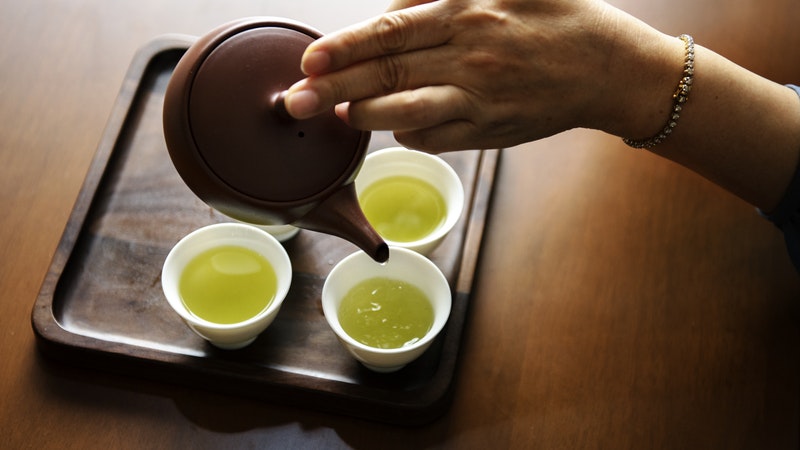Green Tea
Episode #7 of the course The science of tea by Lukasz J. Binkowski
Welcome to the seventh lesson of the course!
Today, we will talk about green tea. This tea is the world’s second most popular type of tea and is considered as the only real alternative to black tea. Let’s see why!
Popularity
As you will see below, the production of green tea is not quite as complicated; in fact, green tea and white tea are the easiest of all teas to produce. It was thus the first tea ever drunk.
Green tea was extremely popular in ancient China and remains popular today. China is the world’s main producer and consumer of green tea. It provides 80% of the world’s demand, but its export constitutes only 9% of production. Although green tea was the first tea exported (it was green tea that was thrown into the harbor during the Boston Party in 1773), it was not popular in Europe and North America at first.
Today, the popularity of green tea has grown significantly due to the avalanche of information about its health properties. But you should remember that this tea is not necessarily better than black tea; it’s just different, so it is best for our health and happiness to drink a variety of teas, including black, green, and other teas.
The Production of Green Tea
As you already know, all tea comes from the processing of Camellia sinensis leaves. The main difference between the production of green tea and the production of black tea is that the latter involves no oxidation. After withering, the leaves go straight to firing or steaming.
The aim of both processes is to stop oxidation. Firing or steaming is followed by rolling in order to improve the further transfer of compounds to the infusion. Since rolling generally stimulates oxidation, freeing the enzymes and compounds from cells, it is important to roll the leaves of green tea after the firing stage.
The further stages, such as sorting and packing, are the same as in the production of other teas.
Brewing and Serving
As a rule of thumb, for brewing green tea, you should use cooler water than for brewing black tea. Using too hot water may result in transferring too many tannins into the infusion, and the taste of the tea will be compromised.
Generally, the recommended temperature is between 70°C and 85°C (158°F and 185°F, consecutively), but there is green tea that is brewed in a temperature lower than 70°C (158°F). So, it’s always a good idea to ask the seller about the temperature best suited to the particular type of tea you buy. Remember about warming the cup or pot first, which lets you maintain the demanded temperature of brewing for longer. Green tea is generally served without any accompaniments.
Varieties
There are many varieties of green tea, and every tea drinker should try as many as possible. Speaking of Chinese green tea, I recommend trying Chun Me, with its wonderful plum aftertaste, and gunpowder tea, with its characteristically rolled leaves.
In addition, you should try Sencha, the most popular tea in Japan, and Matcha, an unusual green tea that we’ll talk about in the next lesson.
Scented teas are also quite popular among the green teas, albeit not only containing green tea. They are not flavored teas, such as Earl Grey, in which the aroma is derived from added spices, herbs, or fruits. To produce scented teas, the producers use aromatic plants in the production process, which are usually in contact with the tea for a period of time. The most well-known scented tea is probably jasmine tea. The high-quality scented teas are always produced by bringing together tea and natural plants. Cheap, imitation, poor-quality teas are prepared using synthetic aromas.
Black teas and green teas are not the only teas in the tea world. Tomorrow, we will have a look at other types of tea, including oolong, the famous Matcha, and Pu-erh.
Till the next lesson,
Lukasz
Recommended book
Matcha: A Lifestyle Guide by Jessica Flint, Anna Kavaliunas
Share with friends

